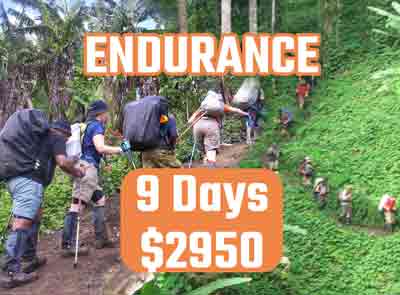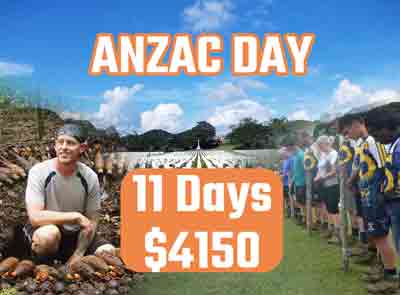The Kokoda Track Campaign: Tracing the Footsteps of Courage In Battles Across Papua New Guinea
Introduction
The Kokoda Trail, also known as the Kokoda Track, holds a significant place in the annals of Australian military history. This rugged and challenging track in Papua New Guinea witnessed intense battles during World War II, particularly in 1942, when Australian forces fought bravely against the Japanese. In this article, we will delve into the Kokoda timeline including the key battles and events that shaped the Kokoda Campaign and the broader conflict in the region.
Detailed Articles on Key Battles and Points for Papua New Guinea and the Kokoda Track Campaign
- Battle of kokoda station
- Battle of mount egan
- Salamaua
- Ioribaiwa ridge
- Scarlet beach
- Nadzab
- Imita ridge
- Battle of goodenough island
- Battle of finschhafen
- Battle of oivi-gorari
- Battle of sattelberg
- Battle of dumpu
- Battle of wau
- Battle of bobdubi
- Battle of the komiatum track
- Slater’s knoll
- Battle of mubo
- Battle of mount tambu
- Battle of buna gona
- Battle of sanananda
- Battle of sio
- Battle of wareo
- Battle of Isurava
- Milne bay battle
- Battle of lae
- Battle of the bismarck sea
- Efogi
Origins of the Kokoda Campaign
Battle of the Coral Sea (May 1942)
The Battle of the Coral Sea, fought in May 1942, played a pivotal role in shaping the course of the Kokoda Campaign. It was a naval engagement between the Allied forces, including the Australian Navy, and the Imperial Japanese Navy. The successful defence in the Coral Sea prevented the Japanese from establishing a stronghold closer to Australia, particularly at Port Moresby.
Securing Port Moresby
Japanese Advance and Australian Response (July 1942)
In July 1942, the Japanese forces aimed to capture Port Moresby, a strategically important location. The Kokoda Track, spanning from the north of Port Moresby to the village of Kokoda, became the battleground. The Australian forces, aware of the imminent threat, engaged in a desperate struggle to halt the Japanese advance.
Battle of Kokoda
The Battle of Kokoda, a crucial early confrontation, unfolded in July 1942. Australian soldiers, valiantly defending their positions, faced the relentless Japanese forces along the Kokoda Track. The village of Kokoda witnessed fierce fighting as the Australian army battled to prevent the enemy from advancing further south.
Holding Kokoda: Isurava and Beyond
The Australian force holding Kokoda faced successive challenges, including the battles at Isurava, Ioribaiwa Ridge, and Eora Creek. Isurava, in particular, became a symbol of Australian resilience as they fought tenaciously to prevent the Japanese from progressing along the Kokoda Trail.
Turning the Tide
Battle of Milne Bay (August–September 1942)
While the Kokoda Campaign raged inland, another critical battle unfolded at Milne Bay. Australian and American forces successfully repelled a Japanese invasion, marking a significant victory in the broader context of the Pacific War.
Owen Stanley Range and the Recapture of Kokoda
The Owen Stanley Range, a formidable natural barrier, became a strategic advantage for the Australian forces. As they withdrew along the track, they regrouped and launched a counteroffensive. The recapture of Kokoda marked a turning point, boosting the morale of the Australian soldiers.
The Ongoing Struggle
Battle of Buna–Gona (November 1942–January 1943)
While the focus shifted from Kokoda, the battle for control continued in the north, with the Battle of Buna–Gona. Australian forces faced harsh conditions as they fought to wrest control from the Japanese in the coastal areas, including the beaches near Buna.
Fighting Along the Track: Endurance and Sacrifice
The Kokoda Trail remained a challenging battleground, with Australian soldiers persevering through difficult terrain, harsh weather, and relentless enemy attacks. The casualties mounted, and the track became a symbol of sacrifice and courage.
Conclusion
The Kokoda Campaign of 1942 was a pivotal moment in Australian military history, showcasing the bravery and resilience of the Australian soldiers. The battles along the Kokoda Trail and in other strategic locations such as Milne Bay and Buna–Gona played a crucial role in turning the tide against the Japanese forces in the Pacific. Today, the Kokoda Trail stands as a memorial to those who fought and died on its challenging terrain, forever remembered for their contribution to the defence of Australia and the broader Allied cause.




